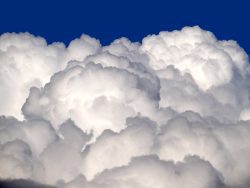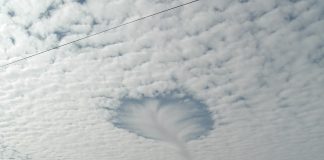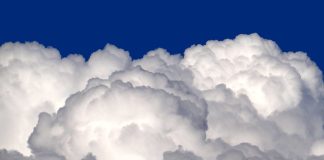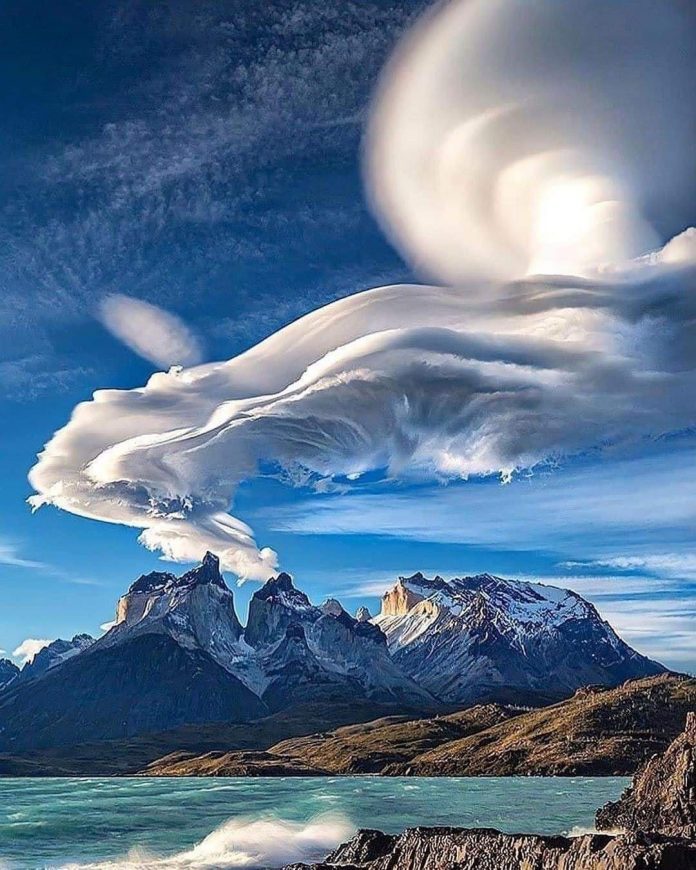
Lenticular Clouds – Weather Phenomena In the Sky
A strange phenomenon has been observed in the sky – a peculiar formation of clouds that appears to be something out of this world. Lenticular clouds, aptly named for their lens-like shape, are an awe-inspiring sight to behold. While they might appear extraterrestrial, lenticular clouds have a scientific explanation and form part of the Earth’s natural weather cycle.
These remarkable formations occur when moist air is pushed upwards by mountains or other geographic features creating layers of air with different temperatures and levels of humidity.
As the warm air rises, it cools and condenses into droplets, forming mesmerizing shapes as they drift through the atmosphere. Despite their unusual appearance, lenticular clouds can sometimes look quite ordinary from afar but, up close, reveal fascinating details about their structure and behavior.

Lenticular clouds often appear stationary in one spot for many hours – seemingly defying gravity – before breaking apart into smaller wisps of cloud that disperse across the sky. It’s no surprise why people have imagined them to be UFOs or supernatural entities throughout
history; even today, some enthusiasts believe them to be evidence of paranormal activity! However, while there may remain some mystery surrounding these strange formations, science has provided us with an explanation that makes them seem all the more magical.
What Are Lenticular Clouds?
Lenticular clouds are an unusual form of cloud formation that can often be spotted from the ground. Characterized by their saucer or lens-like shape, these ‘flying saucer’ clouds have been mistaken for UFOs in the past due to their curiously shaped silhouettes.
The scientific name for this type of cloud is ‘standing lenticular,’ which indicates its stationary nature – unlike other types of clouds, lenticulars do not move across the sky but remain in a single place instead.
The conditions necessary for the formation of standing lenticular clouds are relatively specific; they require moist air and stable atmospheric winds. When the right combination of elements is present, moisture forms into droplets around tiny airborne particles such as dust or smoke particles, creating a banded layer of distinct lens shapes.
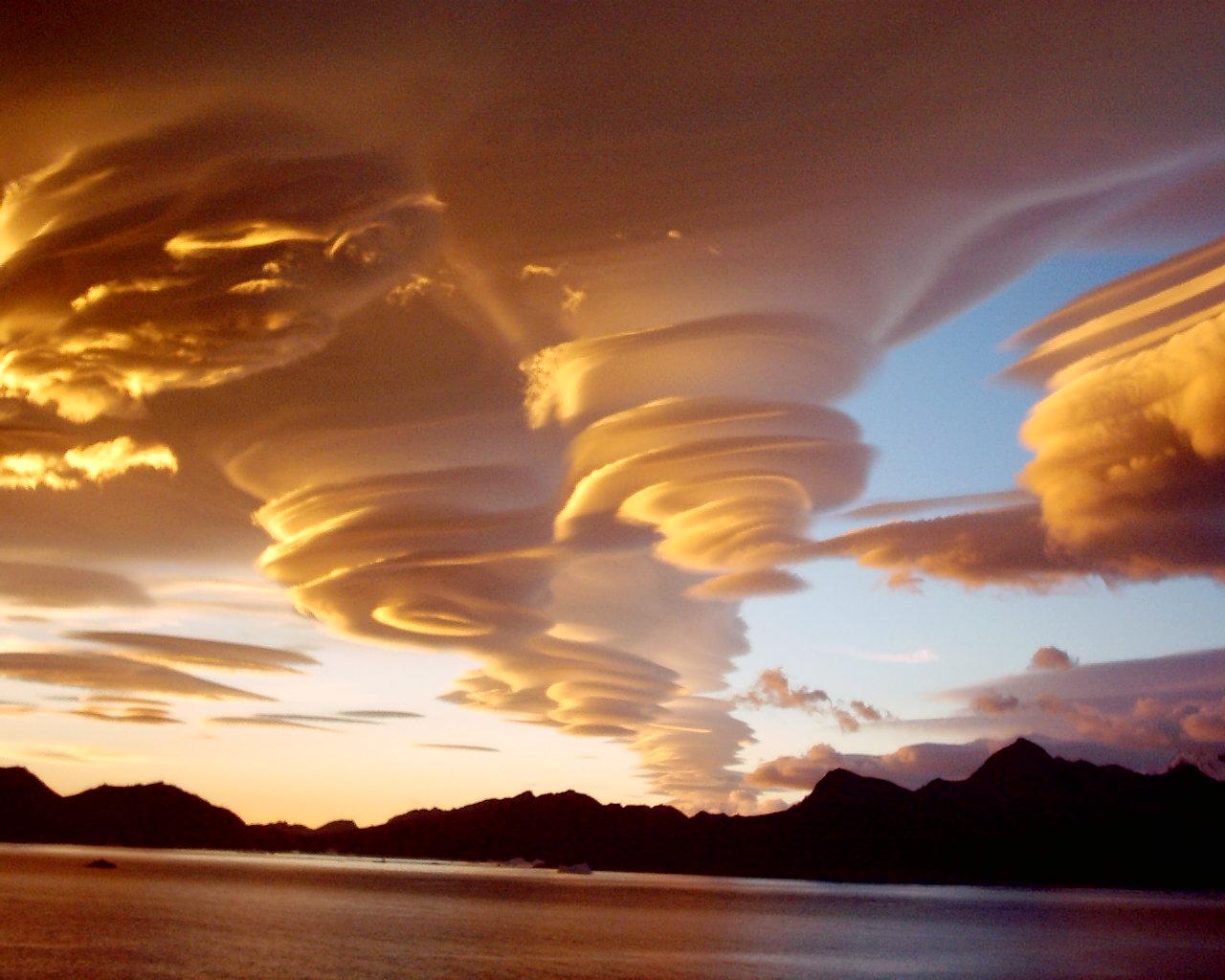
Although they may look like UFOs when viewed from below, natural weather phenomena have been scientifically proven to cause these strange-looking formations.
It’s no wonder why people find themselves captivated by these majestic structures. Intriguingly sculpted and highly visible against any backdrop, watching them drift slowly across the horizon can feel like experiencing something truly extraordinary.
Therefore, witnessing one of these mysterious ‘saucer-shaped’ clouds should not be written off as mere coincidence — rather seen as an opportunity to appreciate our planet’s awe-inspiring atmosphere with all its beauty and power!
Formation Of Lenticular Clouds
Lenticular clouds, also known as lens-shaped clouds, are an awe-inspiring natural phenomenon. On a global scale, they occur in thousands of different shapes and sizes every day; yet their formation is still largely a mystery to scientists. This article will explore the process by which these strange UFO-shaped clouds form.
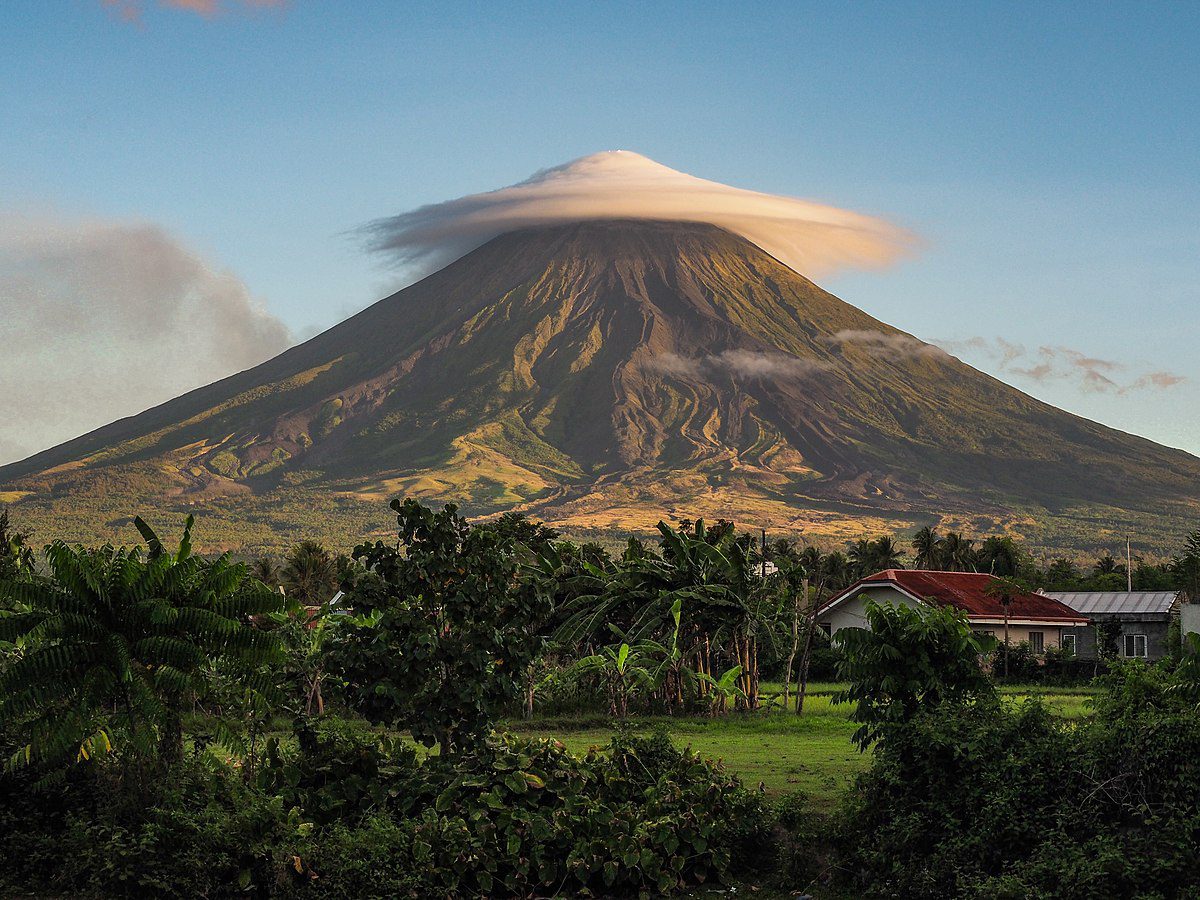
To begin with, it is important to note that standing lenticular altocumulus clouds require steady air currents and well-defined temperature layers for their formation.
Generally speaking, when moist air moves up over mountains or other obstacles, such as waves on the sea surface or sharp contrasts between warm and cold temperatures, the laminar flow can become turbulent – resulting in atmospheric instability.
This creates eddies of rising and falling air masses, condensing into water droplets due to cooling at higher altitudes, thus forming the distinct lenticular shape.
In addition to these conditions being met, another key factor for successful lenticular cloud formation is moisture availability from nearby sources such as rivers or lakes. Studies have shown that one liter of water vapor entering a wave pattern has the potential to produce approximately seven kilograms of liquid water through condensation!
As you can see here, there can be no standing lenticular clouds without sufficient amounts of moisture in the environment, making them even more remarkable when visible across our skies.
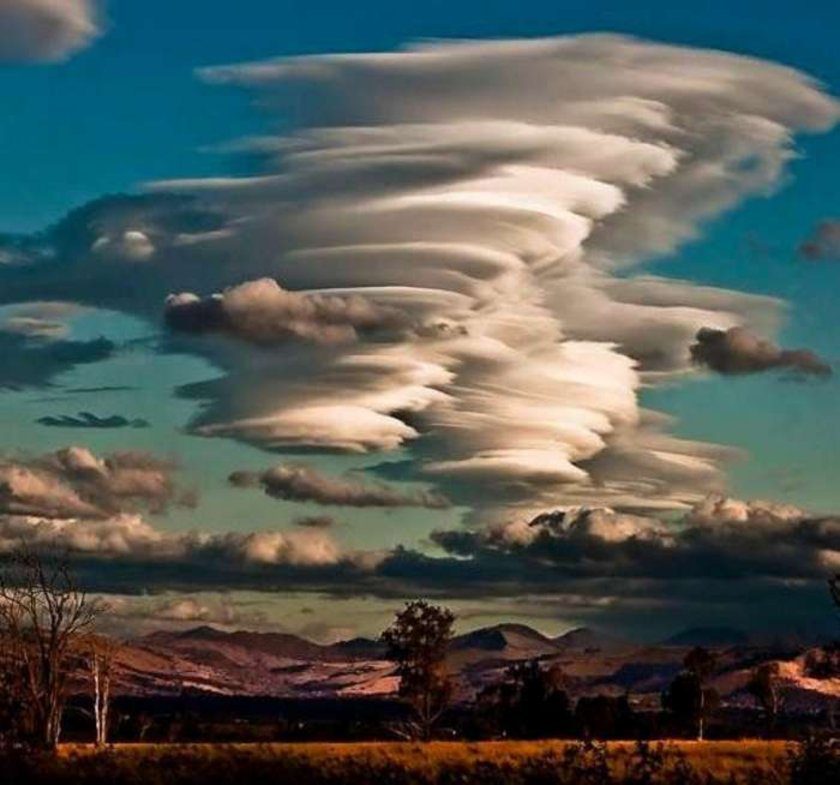
So next time you catch sight of a mysterious-looking disc hovering above your head – pause and appreciate what nature has created before your eyes: an extraordinary combination of meteorological dynamics coupled with vast quantities of atmospheric moisture culminating in one beautiful showpiece – the breathtakingly unique lenticular cloud!
Where Are Lenticular Clouds Found?
Lenticular clouds are mysterious UFO-shaped formations that can be seen in the sky. They often form when air is pushed up and over a mountain range, such as the Rocky Mountains. Lenticular clouds have been mistaken for alien spacecraft, leading to numerous UFO sightings around the world.
These strange cloud formations develop because of certain atmospheric conditions, and their size or shape does not usually change much during their lifetime. They can last from minutes to hours, depending on the weather. It is possible to see lenticular clouds at any time of day, although they are more visible at sunset or sunrise due to the sunlight reflecting off them.

The specific location where you will find these unusual clouds depends on the topography of an area. Generally speaking, lenticular clouds tend to form near mountains since this is where rising warm air meets colder air currents coming down from higher elevations – creating ideal conditions for formation. Here are three key points to remember:
- Lenticular clouds have been linked with many UFO sightings
- They form when air passes over a mountain range
- They occur mainly near mountainous regions like the Rocky Mountains
As a result of their unique shapes, people may take pictures of lenticular clouds as souvenirs – making it seem like something out of this world! However, understanding how these fascinating formations come about helps us appreciate one of nature’s most beautiful phenomena even further.
Do Lenticular Clouds Move?
The answer is yes. Lenticulars move across the sky but at different speeds depending on the wind conditions. Over time, these clouds will break apart into smaller pieces due to strong winds. They may look stationary from far away, but they actually travel like any other cloud formation.
It’s easy to see why so many people have theories about this phenomenon–it certainly looks strange! Knowing more about how lenticulars form and behave gives us greater insight into our ever-changing atmosphere.
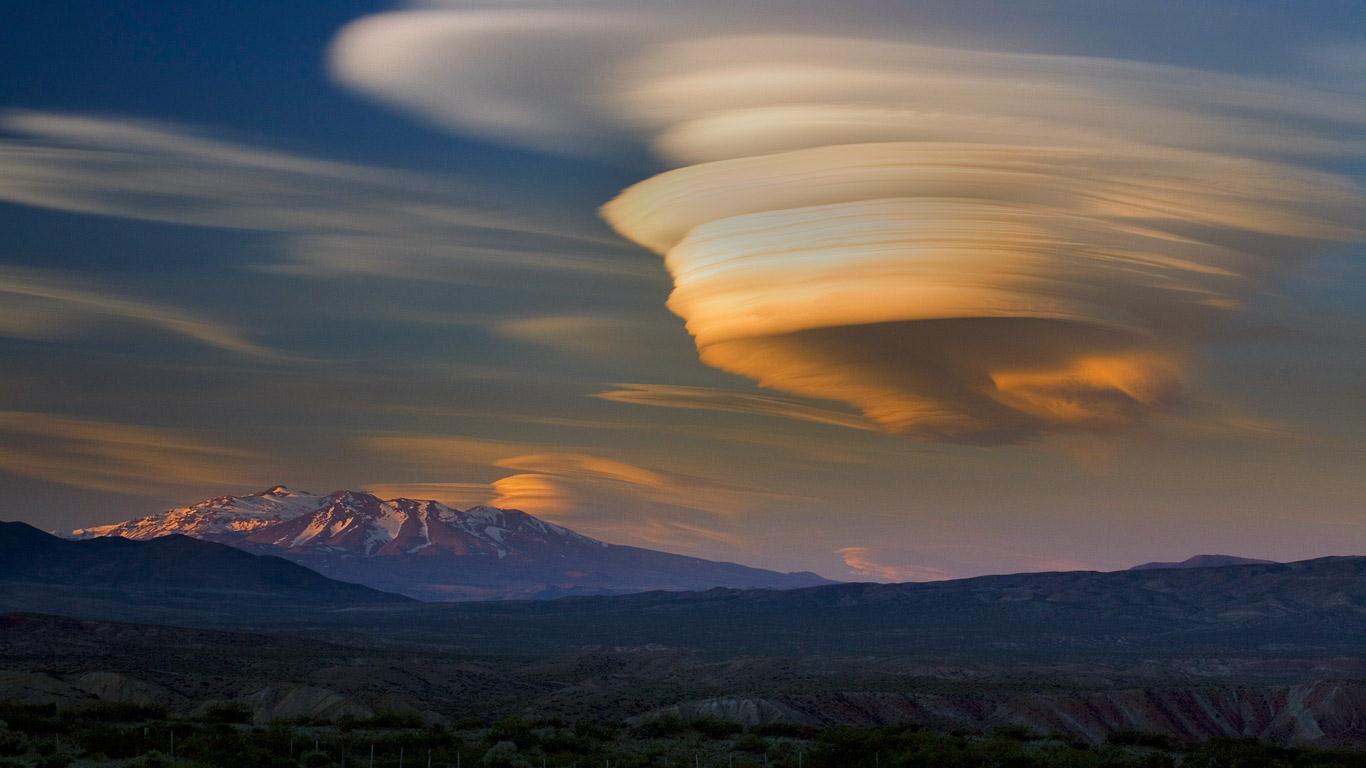
How High Are Lenticular Clouds?
Describing them as ‘strange UFO-shaped clouds,’ lenticular clouds are a fascinating phenomenon in the sky. These altocumulus-standing lenticulars, also known as lens-shaped clouds, can be seen hovering in the same spot for hours or even days. But how high do they go? Let us explore this question further.
Lenticular clouds can range from 20,000 to 40,000 ft (6,100-12,200 m) above the Earth’s surface. These clouds are at the highest level and are cirrocumulus-standing lenticular clouds.
Studies have indicated that aerodynamic forces such as wind shear and turbulence play an important role in generating lenticular clouds – often creating multiple layers at different levels in the troposphere due to varying temperature and humidity profiles within the atmosphere. This could explain why it’s difficult to predict their exact height before it forms on any given day.
Different Types Of Lenticular Clouds
There are three types of lenticular clouds:
- Stratocumulus standing lenticular (SCSL)
- Altocumulus standing lenticular (ACSL)
- Cirrocumulus standing lenticular (CCSL)
The type of lenticular cloud depends on its altitude, with stratocumulus, altocumulus, and cirrocumulus being three of the ten main types of clouds. Lenticular clouds are lens- or saucer-shaped and typically form when stable moist air flows over mountains.
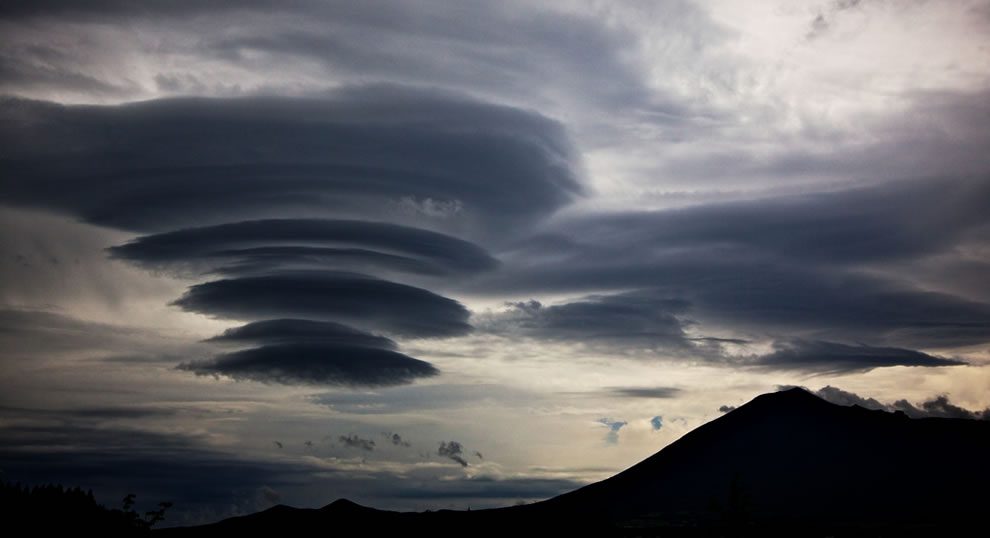
They differ from cap clouds that occur directly over a mountain peak and have a flat, dome-shaped form, while lenticular clouds have a layered or stacked shape.
The sky above us is a canvas of beauty and mystery, with the ever-changing pattern of clouds providing an endless source of intrigue. Lenticular clouds are strange UFO-shaped formations that seem to defy our understanding of how the atmosphere works. But what types of lenticular clouds exist? Let’s take a closer look at this bizarre phenomenon.
Real lenticular clouds form when moist air is forced up over high terrains like mountain ridges or hills. As it rises, droplets in the air form into altocumulus standing lenticular (ACSL), which appear as smooth lenses or saucers seen below. Stacked ACSL can also occur, forming multiple tiers separated by distinct layers of dry air between them, resembling stacked pancakes.
Another type, known as normal or wave clouds, develop when there is a disturbance in the atmosphere, such as winds blowing across mountains. This creates alternating rising and sinking air areas, resulting in wavelike structures visible from below. These waves may be stationary for days but eventually, dissipate if conditions no longer remain favorable for their formation.
So next time you spot those unusual-looking cloud formations hovering motionless in the sky, know that they are likely one of several kinds of lenticular clouds formed under certain atmospheric conditions found only in nature!
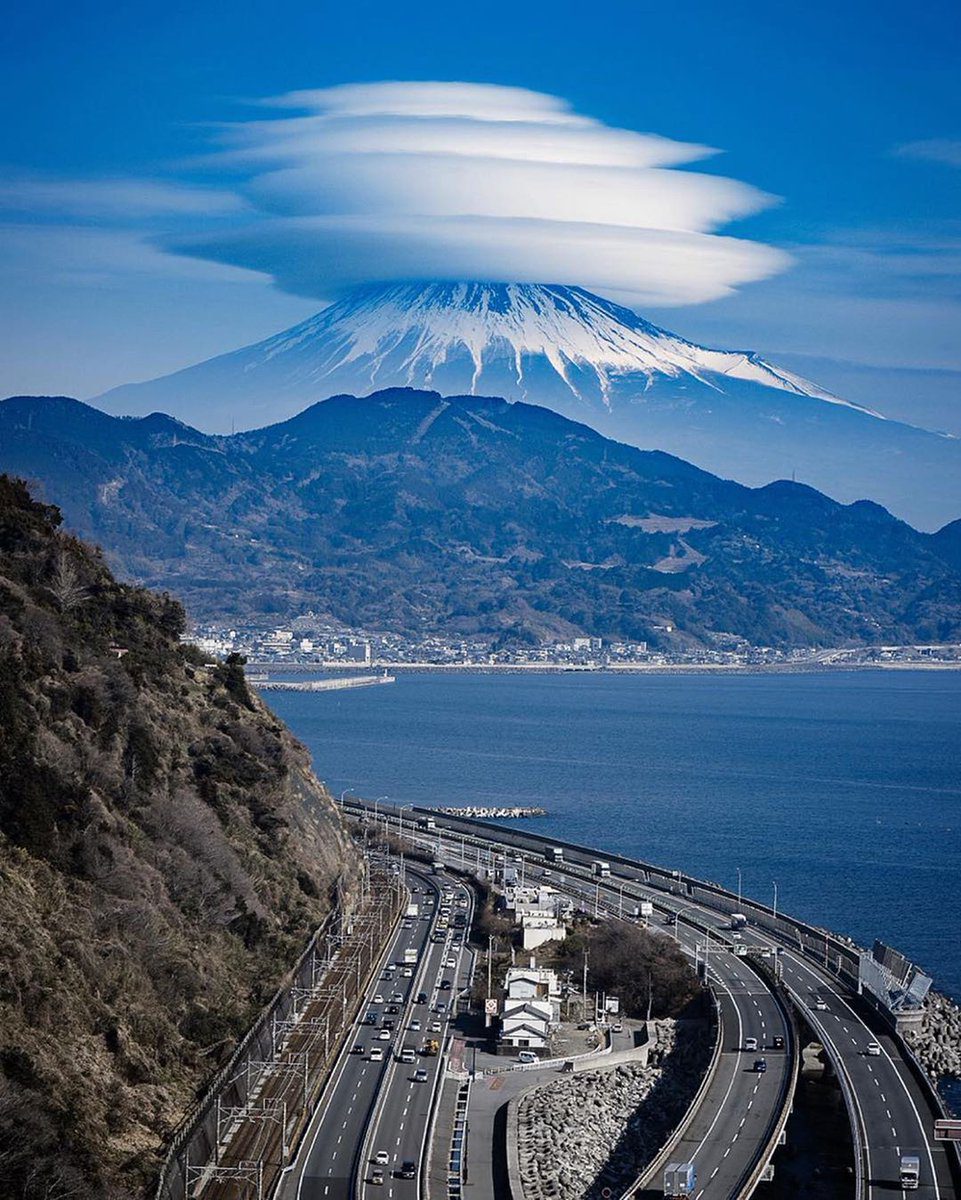
Lenticular Clouds And Weather
Lenticular clouds are like a strange and mysterious portal to another world, hovering in the sky with their UFO-like shape. To many, they evoke an almost spiritual connection to nature’s cosmic powers, but what is the true power behind these remarkable formations?
The answer lies within the air currents that lend themselves to form these wonders of our atmosphere. Lenticular clouds are typically formed when moist air passes over mountain ranges, creating standing waves in the atmosphere which then condense into cloud droplets to create a lens-shaped formation.
They tend to be associated with good visibility, clear skies, and light winds – making them ideal places for glider pilots looking for a lift or fair-weather adventurers out on excursions!
Not only can you spot lenticular clouds during your travels through mountainous regions across the globe, but each type of lenticular cloud also has its own unique properties. From stratocumulus standing lenticular (SCL) clouds that look like giant saucers suspended in mid-air to cirrocumulus standing lenticular (CCSL) clouds resembling tufts of candyfloss floating against a blue backdrop – there’s plenty of variety amongst this family of clouds!
So next time you’re admiring some unusual shapes in the sky, keep an eye out for those enigmatic lenticular clouds – who knows what kind of journey awaits beyond them?
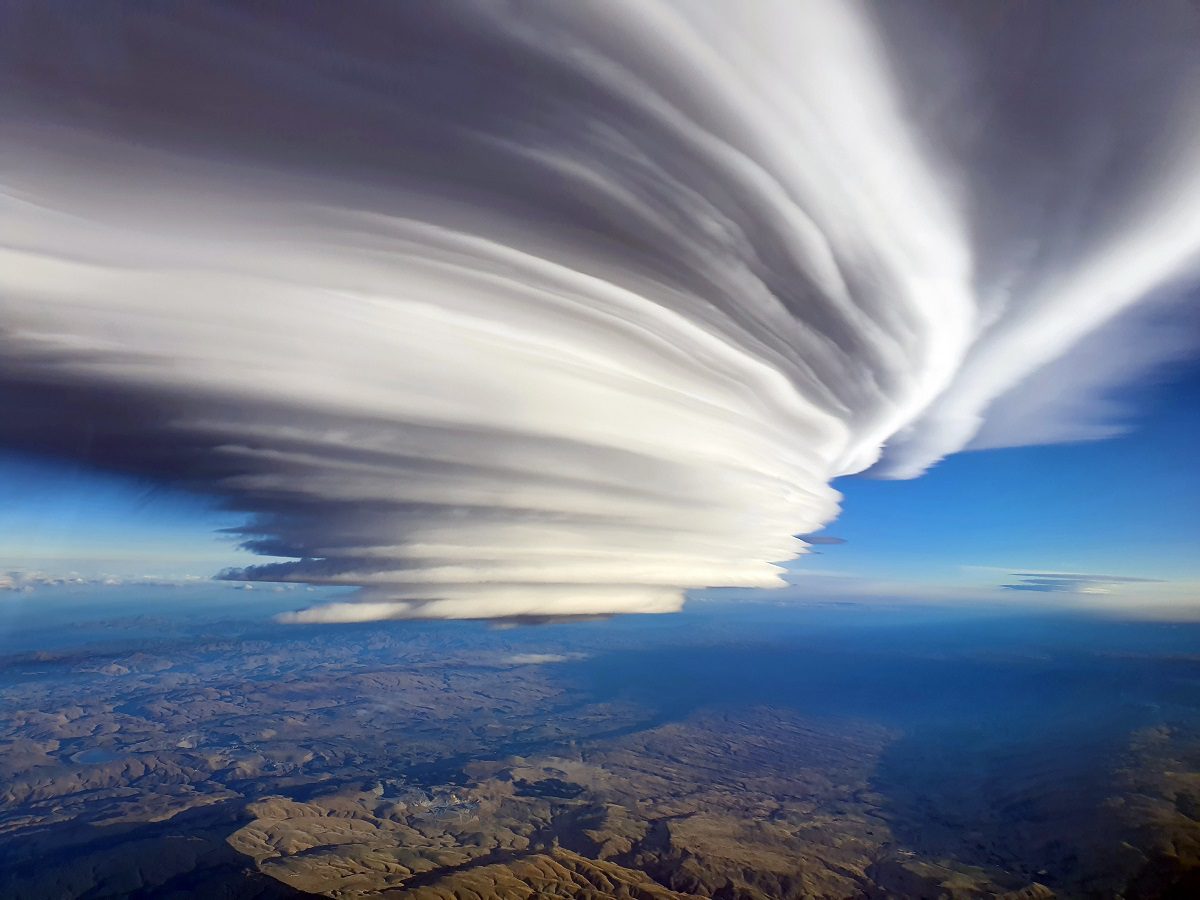
we were expecting pretty bad turbulence for most of the flight down, but we managed to avoid it pretty much entirely. The photos show the view as we approached from the north. Thought it was going to be pretty cool but as we deviated to the right to go around it (these cloud types are notoriously dangerous to even powerful commercial aircraft), it turned out to be a surreal sight indeed. The image makes me think of a massive alien mothership. Others on twitter think it looks like the base of a huge airship.
Visibility Of Lenticular Clouds
It is not uncommon for lenticular clouds to appear slowly and steadily on clear days at higher altitudes; they often look like stationary UFOs hovering in the atmosphere. Lenticular cloud formations occur typically when warm air passes over mountains, creating ridges that spread horizontally across the sky.
As this air moves upward, it cools and condenses into an array of distinctively shaped clouds that can move with great speed along mountain ridges before eventually dissipating and vanishing from view.
Due to their unique shape and movements, lenticular clouds have been documented throughout history as having inspiring spiritual qualities – appearing suddenly amidst stormy weather only to vanish after a few moments – making them objects of fascination amongst many cultures and civilizations worldwide.
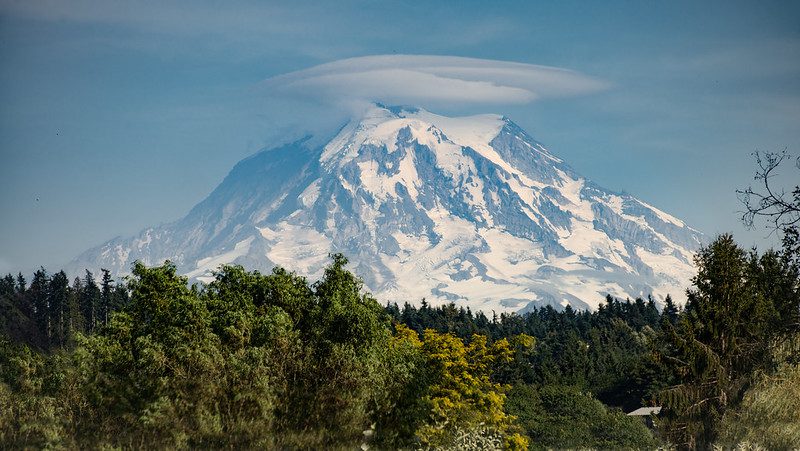
Lenticular Clouds And Aviation
It is not only the general public who greatly appreciates these extraordinary sights; aviation also plays an important role. Glider pilots often use them to gain lift during flights by flying through their waves of air which helps them rise quickly and efficiently into higher altitudes.
Lenticular clouds are of interest to pilots due to the special circumstances under which they form. Their presence may indicate the presence of a mountain wave and possible severe turbulence.
Lenticular clouds can persist for hours and are considered rare in the atmosphere. Pilots should understand the turbulent conditions that can occur when flying in regions with lenticular clouds.
Lenticular clouds provide a fantastic spectacle for onlookers and offer incredibly useful benefits within the realm of aviation due to their ability to help aircraft reach greater heights with less energy output – allowing those onboard to enjoy smoother rides while saving fuel costs along the way!
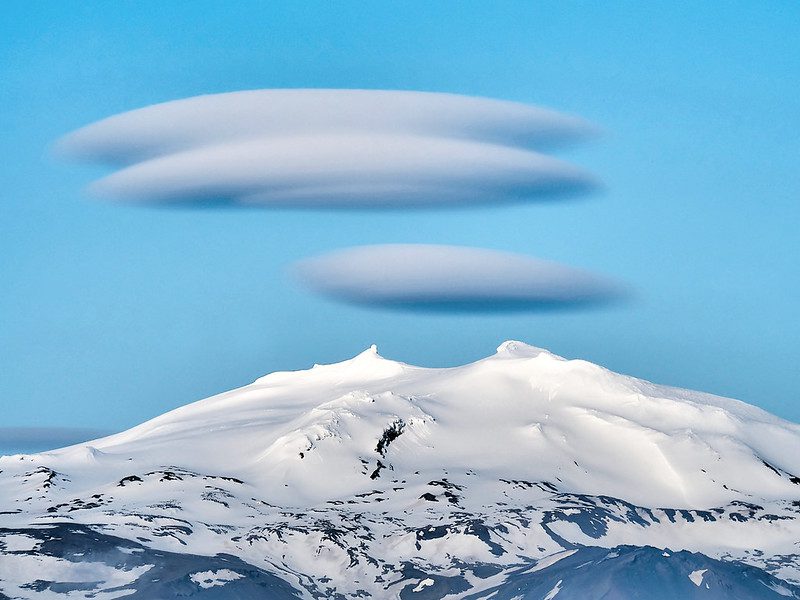
Photographing Lenticular Clouds
When viewed from below, single lenticular clouds display various shapes depending on how much moisture is inside them at any given time. However, double lenticular cloud formations occur more rarely yet provide even more interesting photographic possibilities for those lucky enough to experience them firsthand!
Photographing lenticular clouds can be a beautiful and captivating experience. Lenticular clouds form when stable, moist air flows over a mountainous barrier and the air cools and condenses into clouds. They have a unique lens or saucer shape that can make for stunning photographs.
Photographers often wait for the right lighting conditions, such as just after sunset when the pink light still colors the sky and the blue of the evening gradually takes over. Capturing the reflections of the lenticular clouds on the landscape can also add an extra element of interest to the image.
There are many websites, such as EarthSky and Forbes, that feature beautiful lenticular cloud photos from photographers around the world. Individual photographers also maintain their own blogs, such as Calvin Chiu Photography, where they write about the stories behind their photos and share their thoughts about photography-related issues.
Photographing lenticular clouds can be challenging but also extremely rewarding if done correctly. With patience and practice, anyone can capture these marvels of nature in all their glory and ensure that no lapse of beauty goes unseen by the human eye!
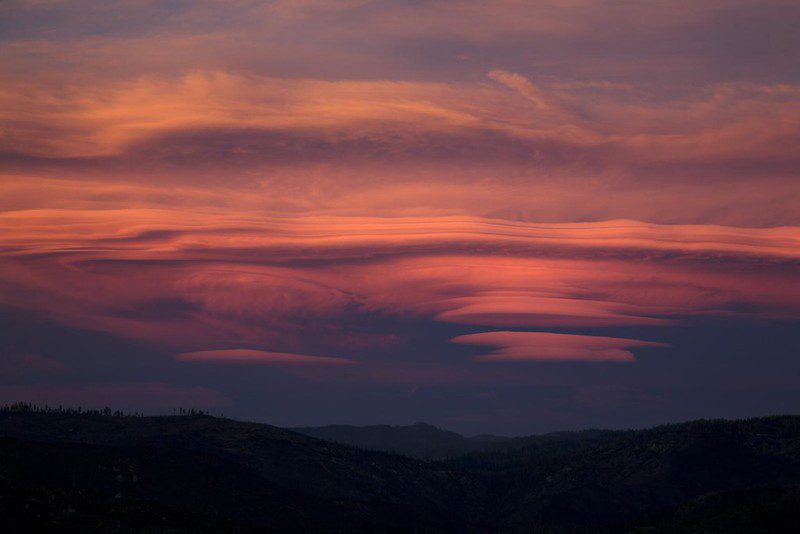
Lenticular Clouds In Mythology And Culture
In mythology and culture, these mysterious clouds can take on a variety of different meanings depending on location and context.
Lenticular clouds, also known as “lens-shaped” clouds, have been observed by humans for thousands of years. In many cultures, they have been considered a source of awe and mystery and have been depicted in mythology and folklore.
For example, in some indigenous cultures, lenticular clouds were seen as a sign of the presence of powerful spirits or deities. In other cultures, they have been interpreted as omens or portents of future events.
In recent times, lenticular clouds have also been associated with UFO sightings, adding to their mysterious reputation. Despite this, lenticular clouds are a natural meteorological phenomenon caused by air currents flowing over mountains.
In some parts of South America, for instance, lenticular clouds were believed to be the home of evil spirits or witches who sought revenge against people that had wronged them.
On the other hand, in many Native American cultures, they were thought to be spiritual portals between the physical world and supernatural realms – acting like bridges between our reality and something greater beyond it.
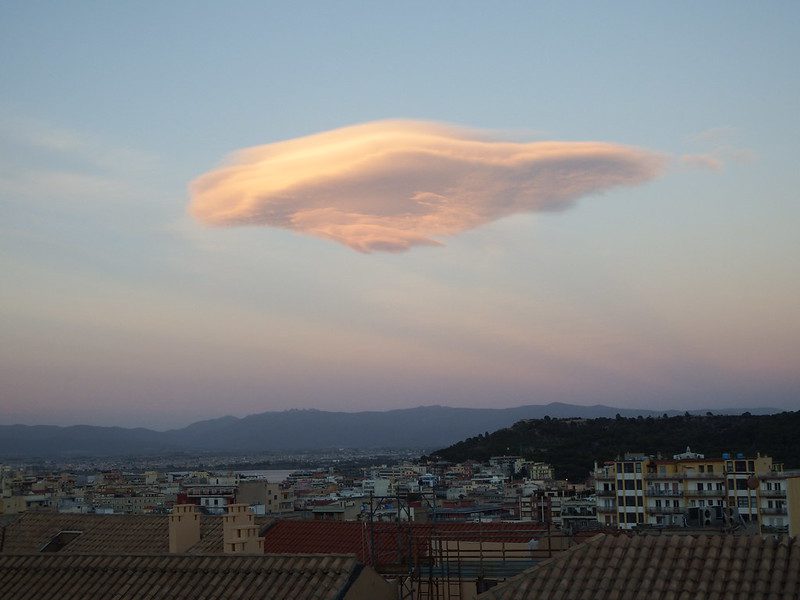
Lenticular Cloud Sightings And Ufo Reports
Lenticular clouds have long been associated with UFO sightings and other strange phenomena. It is no surprise that these lens-shaped clouds have often been linked to extraterrestrial activity.
Lenticular clouds have been frequently mistaken for Unidentified Flying Objects (UFOs) due to their unusual appearance. Lenticular clouds’ lens-like shape and stability can give the illusion of a flying saucer or disk-shaped object. This has led to many reports of UFO sightings, especially in areas with frequent lenticular cloud formations.
However, these sightings can easily be explained as misidentifications of lenticular clouds and are not evidence of extraterrestrial activity.
It is important to remember that most UFO reports can be explained as natural phenomena, misidentifications of aircraft or satellites, or hoaxes. Scientific investigation and critical thinking are crucial in separating fact from fiction when it comes to UFO reports and other unexplained phenomena.
These strange shapes and eerie silence makes it easy to see why ancient cultures might associate them with supernatural events or foreign visitors! While there may not be any evidence linking UFOs and lenticular clouds, we cannot deny their captivating beauty and mystery – perfect ingredients for keeping our imaginations alive.
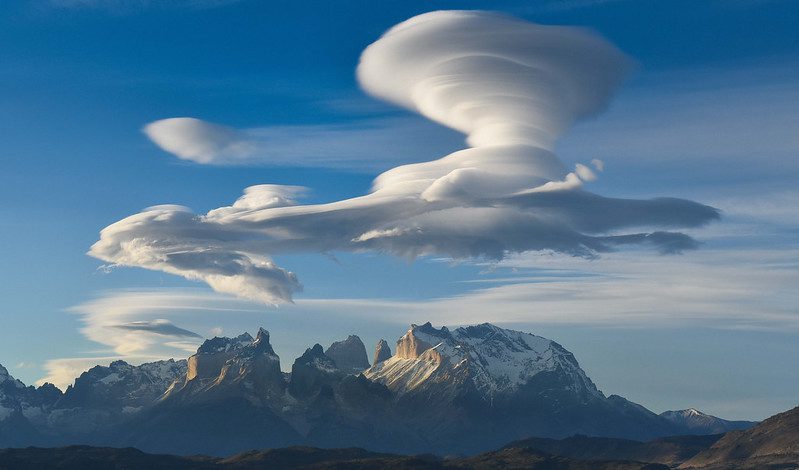
What Is The Scientific Explanation For Lenticular Clouds?
Lenticular clouds are formed when moist air is forced to flow over a barrier, such as a mountain range. As the air flows over the top of the barrier, it cools and condenses, forming a cloud. If the conditions are just right, the cloud can maintain its lens-like shape for extended periods, leading to a lenticular cloud’s characteristic appearance.
The interaction of the air with the mountain barrier and the surrounding atmosphere causes the shape and stability of lenticular clouds. When the air flows over the mountain, it is deflected upward, causing it to cool and condense.
As the air moves down the other side of the mountain, it warms and dries, causing the cloud to dissipate. This cycle of flow and dissipation can repeat multiple times, leading to the formation of several stacked clouds, each with a distinct lens shape.
Lenticular clouds are not a frequent occurrence, and they form under specific meteorological conditions. They are most commonly seen in areas with strong winds and large mountains, such as the lee side of the Rocky Mountains in the western United States.
Frequently Asked Questions
What Colors Do Lenticular Clouds Appear In?
Lenticular clouds can appear in a range of colors, depending on the time of day and atmospheric conditions. During the day, lenticular clouds are often white or gray, reflecting the light from the sun. However, they can also appear in shades of blue, green, or red, depending on the angle of the sun and the amount of moisture in the air.
Lenticular clouds can take on a pink, orange, or red hue at sunset or sunrise as the sun’s light is refracted and scattered through the Earth’s atmosphere. These colors are caused by the same processes that produce spectacular sunrises and sunsets, and they can make lenticular clouds appear even more dramatic and awe-inspiring.
It’s clear from these examples that each unique combination of atmospheric components works together to give us something truly magical – conjuring images straight out of sci-fi movies for any lucky enough to witness them.
Whether vibrant oranges or muted greys, lenticular clouds offer a mesmerizing display that rivals even the most breathtaking sunsets – one we should all appreciate before they dissipate back into thin air!
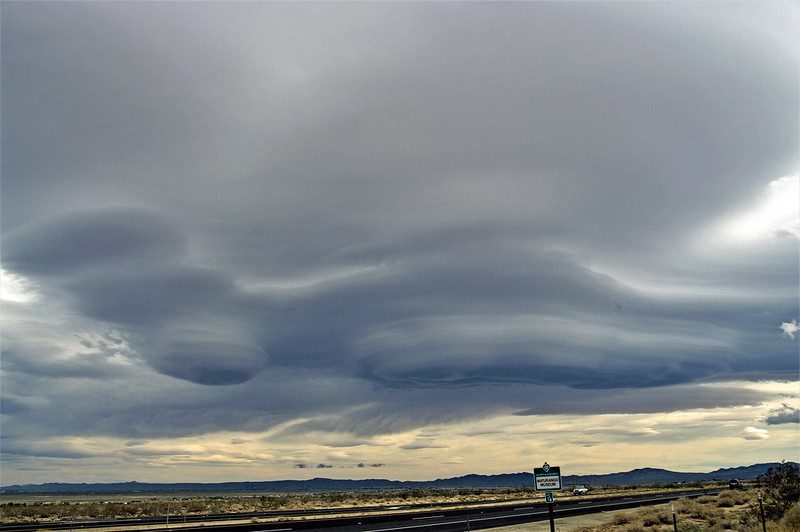
Is There A Difference Between Lenticular Clouds And Cirrus Clouds?
Lenticular clouds, as described, are lens-shaped clouds that form on top of mountains due to strong winds being forced upward by the terrain. The air cools and creates a stationary cloud that caps the ridge.
Cirrus clouds, on the other hand, as described in [1] and [2], are wispy clouds that are high in the atmosphere and made up of ice crystals. They are typically seen on clear days and are mostly transparent or translucent.
So, while both lenticular and cirrus clouds are clouds, they are different in terms of their formation, appearance, and location in the atmosphere. Lenticular clouds form due to strong winds and terrain, are stationary and are often seen near mountains, while cirrus clouds are high in the atmosphere, wispy, and made up of ice crystals.
Are Lenticular Clouds Unique To Certain Areas?
Lenticular clouds are an extraordinary sight, with their UFO-like shapes providing a captivating view of the sky above. But how unique to certain areas is this phenomenon? According to NASA’s Earth Observatory data, lenticular clouds can be seen in over thirty countries across six continents – from Chile and Mexico to India and China.
In addition, lenticular clouds may also appear due to atmospheric disturbances created by large bodies of water, such as lakes or oceans, causing wind patterns upwind from them to become disrupted.
These unusual meteorological events have been observed worldwide, including Japan’s Lake Biwa and California’s Mono Lake in the United States. It appears then that although lenticular clouds can occur anywhere in the world, most sightings tend to happen near hilly terrain or large bodies of water.
Hence it is safe to say that while not exclusive to any specific region on earth, evidence suggests that if you’re looking for a sighting of one of these strange yet beguiling forms, then your best bet would be somewhere located close to either mountain range or water sources.
Are lenticular clouds dangerous?
No, lenticular clouds are not generally considered to be dangerous. They are simply cloud formations that occur under certain atmospheric conditions and do not pose any threat to people or property.
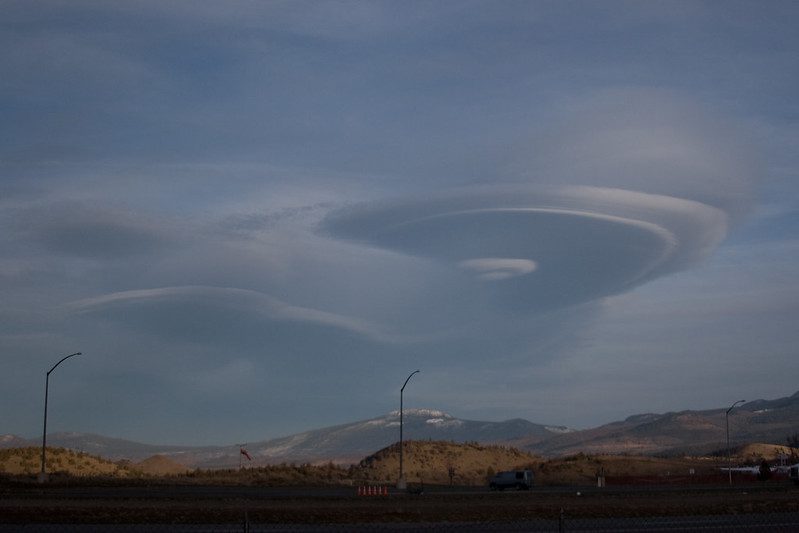
Where are lenticular clouds most likely to form?
Lenticular clouds are most likely to form in mountainous areas or places with rolling hills. These clouds require mountain waves of air to form, and the mountains serve as an obstacle to air, causing these waves to occur. Lenticular clouds form when stable moist air flows over mountains.
How long do lenticular clouds last?
Lenticular clouds can persist for several hours after forming and remain in the same location before gradually disappearing. The lifespan of a lenticular cloud can vary depending on the type of cloud.
Do lenticular clouds produce rain?
Lenticular clouds can sometimes produce precipitation, such as light rain or drizzle. This occurs when the temperature at the crest of the airwaves reaches the dew point and the cloud forms. However, not all lenticular clouds produce precipitation.
What are mountain clouds called?
Mountain clouds are sometimes referred to as “cap clouds” or “lenticular clouds.” Cap clouds form directly over a mountain or high hilltop peak and are stationary orographic clouds that form when moist air is forced up the windward slopes and condenses.
Lenticular clouds can form when sufficient moisture is present and the wind blows over a mountain range, creating downstream waves. The altitude levels at which these clouds are found are typically determined by their grouping as high, middle, or low clouds.






































